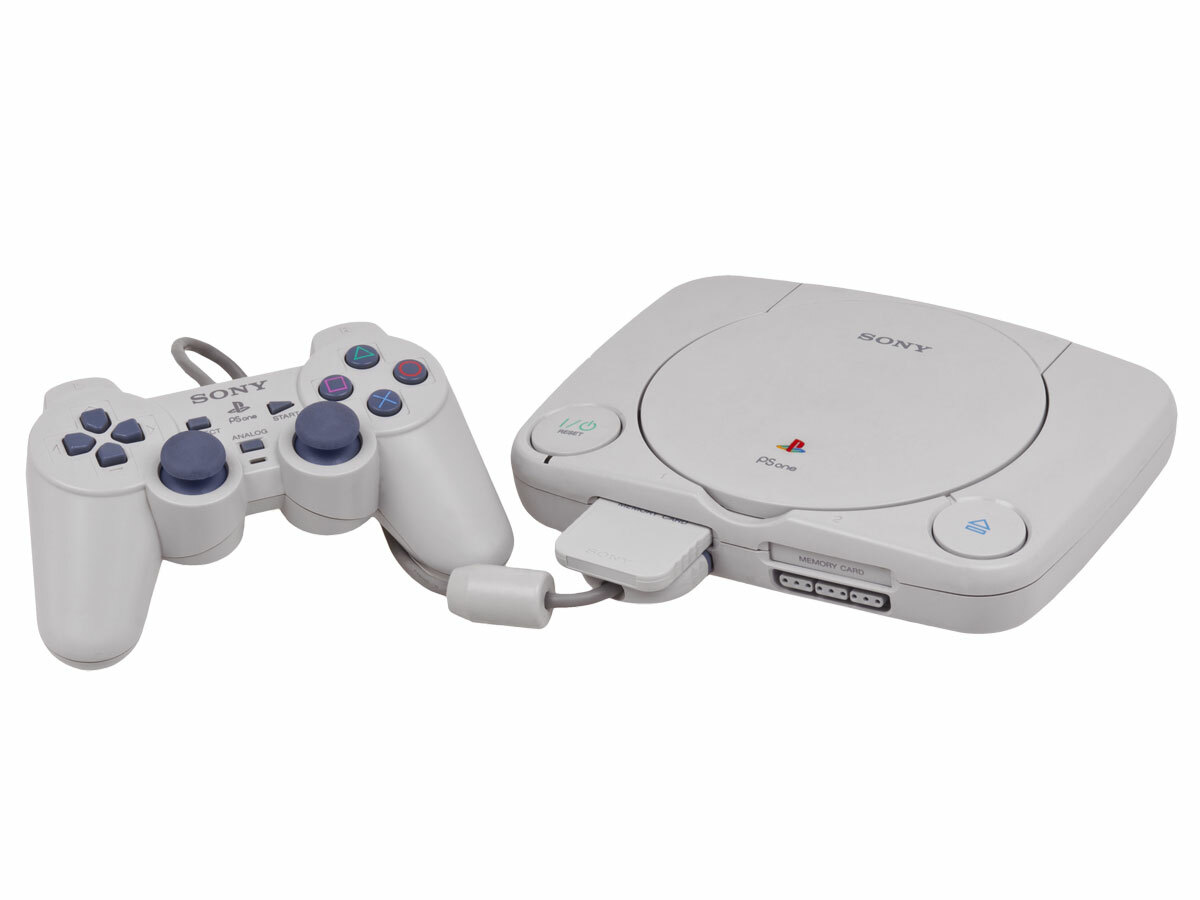Hall of Fame: Sony PlayStation, the games console that changed everything
As the PS4 draws ever closer, let’s take a look at the console that kickstarted a gaming revolution: the first Sony PlayStation

No one can pretend that the original PlayStation was pretty. It was an ugly grey slab, like a paving stone with a pan lid on top. But opening that pan lid was the gateway to worlds we’d never seen before.
You could immerse yourself in the waterways of Venice and the catacombs below. The hidden race tracks of Mars. The ancient castles of, um, Southeastern Australia. All in three glorious dimensions thanks to Ken Kutaragri’s 32-bit chip, boasting technology first used in Silicon Graphics workstations.
The PlayStation, retroactively dubbed the PS1, was made from two slices of awesome with a tasty filling of genius, chutzpah and luck.
Finishing Move
Launched first in Japan, Sony PlayStations continued to roll off the production line for a staggering 10 years – from 1994 to 2004. The design changed along the way – significantly when it was rebooted as the PSOne in 2000 – but the hardware was basically the same. Only one other console beats it for longevity: the PlayStation 2.
It took almost a year for the PlayStation to reach the USA and Europe after its Japanese debut. Hitting European shops in September 1995, 600,000 consoles were sold before New Year’s Eve. A further 800,000 PlayStations found their way into American homes.
The entrenched market leaders were Sega and Nintendo. They’d invested heavily in fifth generation products – the Sega Saturn and Nintendo 64 – and both were left in the dust with the letters “KO” floating over their battered corpses.
By 2007, Sony had sold 102 million PlayStations and made gaming thoroughly mainstream. What went so right? Funnily enough, Nintendo had a hand in that too.
The Super Nintendo Sony Play Station

A games console called the Sony PlayStation (or Play Station, to nitpick) debuted at CES in 1991, a full three years and change before its eventual launch in Japan. But the console that Sony exec and hardware engineer Ken Kutaragi demonstrated at the show was pretty familiar looking. That’s because it was a SNES, with a CD Rom player built in.
Kutaragi lead the PlayStation project from day one, building links with Nintendo and creating new technology for the game giant alongside his day job at Sony. But the day after the CES demo, Nintendo announced that they were partnering with Philips instead.
That may seem like lunacy through the magic rear view mirror of hindsight, but in 1991 Philips was a global leader in multimedia technology rather than just a lightbulb and toothbrush maker. Undeterred, the PlayStation team regrouped under Sony Music’s protective wing, kissed their teef in Nintendo’s direction and set out to build a standalone console, codenamed the PS-X.
Gaming: The Next Generation
A successful console launch depends on a number of tasty ingredients. If the piquancy of hardware power was all that mattered, the Atari Jaguar would have kick-started the video game revolution instead. If sweet, sticky branding was all anyone cared about, the Sega Saturn would have trounced all comers.
“The Sega Saturn was the only serious competitor to the PSX,” says Jake Smith, a digital designer who began his career testing PlayStation titles at Sony owned Psygnosis. “The games showed promise, but the high price tag proved a sticking point early on.”
Timing is important too, which is one reason why the Nintendo 64 failed to tickle many taste-buds when it finally shipped in 1996.
Polygon Baby, Gone
The PlayStation’s success is a story of elements in balance, of luck and foresight coming together at the right time. And it began with the hardware.
“A) it was CD based. And B) it did PROPER 3D via hardware,” says Stewart Gilray, a veteran game developer and producer who now heads up Just Add Water Ltd. “I don’t think anyone actually believed it was going to take off as much as it did, but then it did and the rest is history…”
The SNES had pseudo 3D with pre-rendered sprites and real, polygonal 3D in Super FX powered games like Star Fox, but the PlayStation’s SGI inspired 32-bit CPU could fling 180,000 texture-mapped polygons on screen per second.
Though 3D was an essential component, the successful switch from cartridge to CD based gaming can’t be emphasised enough.
“The storage format, CD, meant that immersive games were longer and offered more depth in a larger universe, something gamers had never experienced before,” says Jake Smith. “I’ll never forget the visit [to Psygnosis] and my first play on a PSX. One of the lads let me sit down and put headphones on for a go on Wipeout. Suffice to say it blew my mind, and I can remember thinking ‘this changes everything!’”
Oh My. It’s full of Games
When X comes to O, game consoles are only as good as their games. And the roster of PlayStation classics, from Tekken and Need for Speed III to FIFA 2005 and FF IX, is long and illustrious.
“The games that Sony launched the system with were spectacular, particularly in comparison to what else there was at the time,” says Matt Spall who was a producer and development manager at Virgin Interactive, Psygnosis and Take 2 during the PlayStation’s lifetime. He cites a first look at Ridge Racer as a moment of epiphany.
Industry insiders confirm that the sterling quality of the PlayStation library wasn’t just down to the plastic and metal in the box.
“We had fantastic SDK Libraries from Sony, so it was fun,” says Stewart Gilray. “When we started seeing stuff we were working on coming to life on the hardware it was great, a sense of achievement.”
Golden Oldie

That level of support and a concentration on creativity accounts in part for the PlayStation’s longevity.
“The games got progressively better and better during the console’s life,” says Jake Smith. “That was a by-product of good developer tools. A host of franchises had multiple releases during the PSX’s lifespan. High quality, high production series like Resident Evil, Tomb Raider and Final Fantasy.”
Sony knew how to protect their brand too. The Last of Us on the PS3 was this year’s big exclusive – and the original PlayStation had its share of exclusive titles, from Syphon Filter through to Crash Bandicoot, the PSX’s equivalent of Sonic or Mario.
“Sony always seemed to be very proactive in ensuring high profile exclusives, or exclusivity periods,” says Matt Spall. “If you wanted to play the most interesting and innovative products, you had a PlayStation.”



